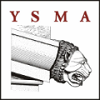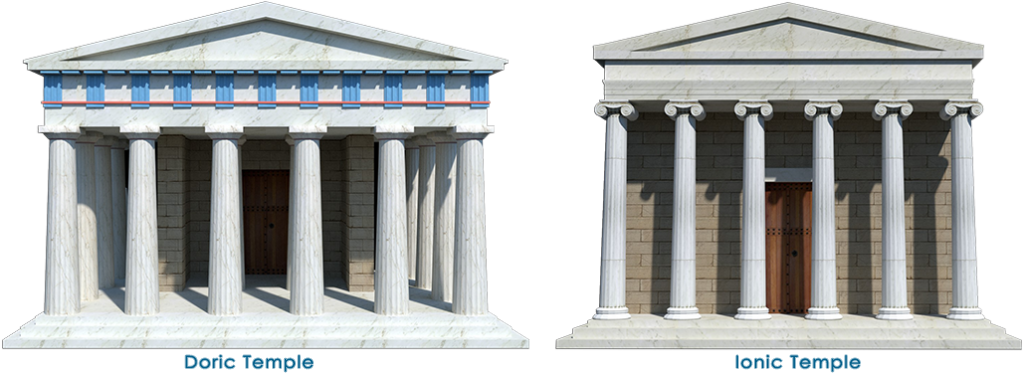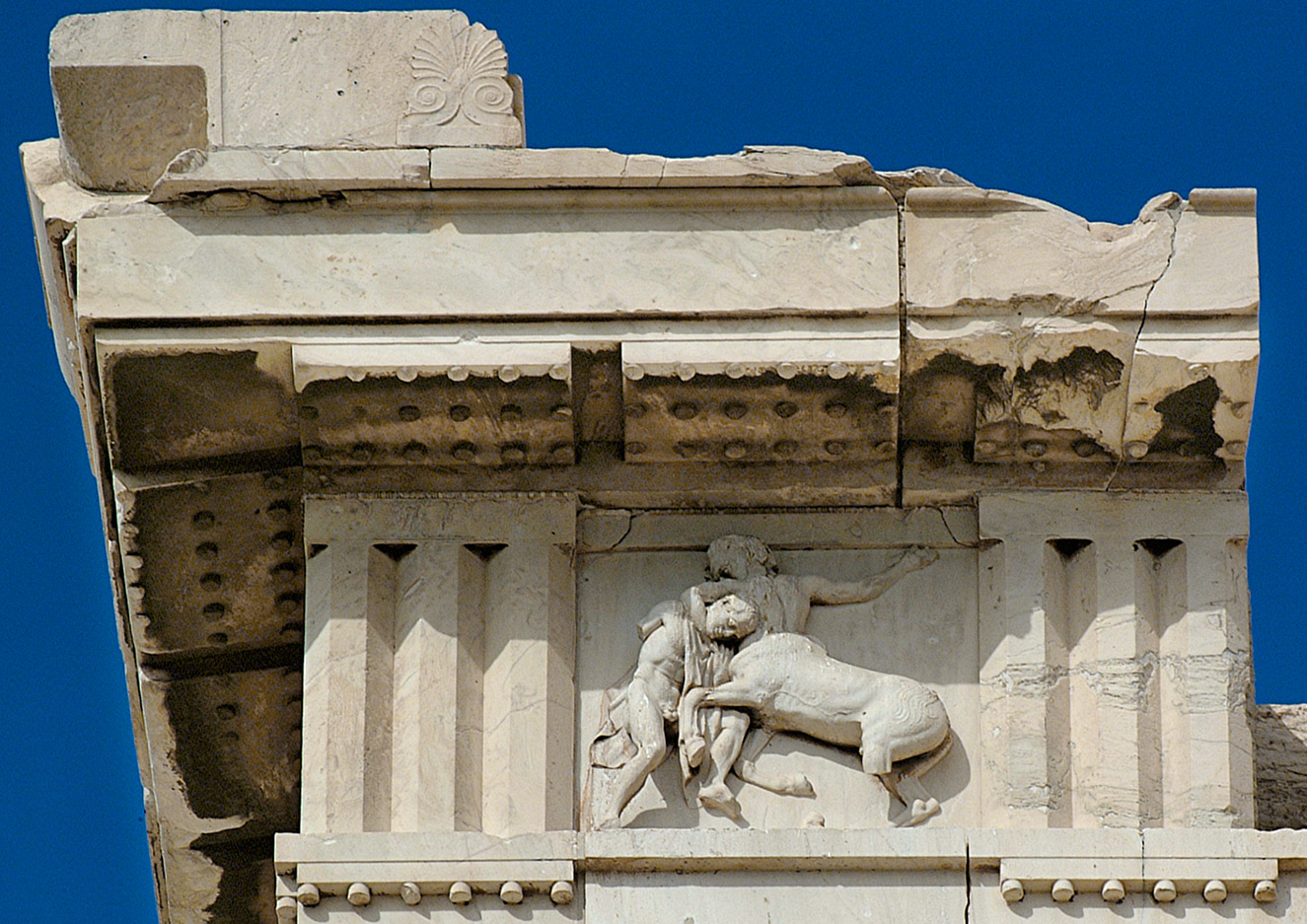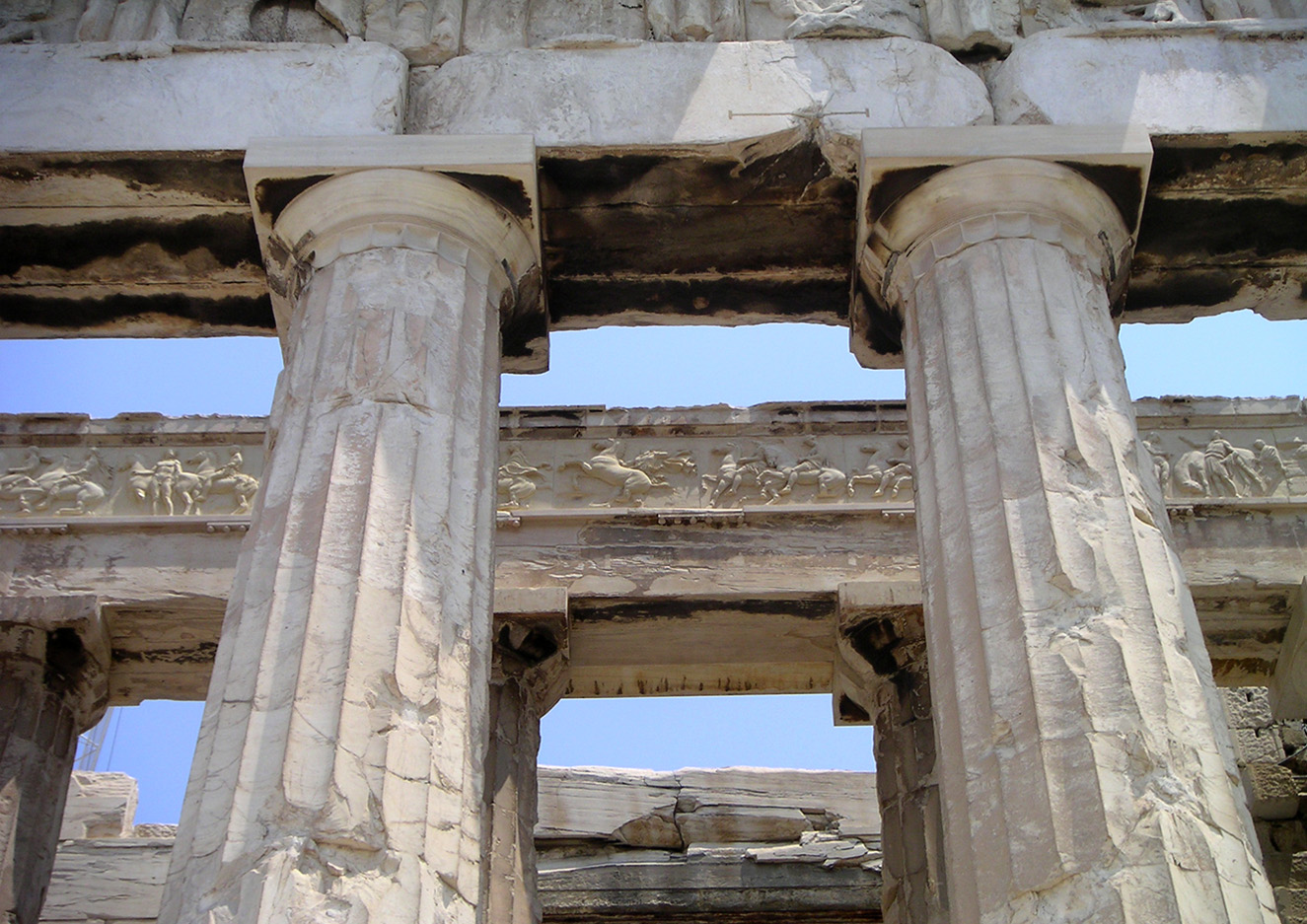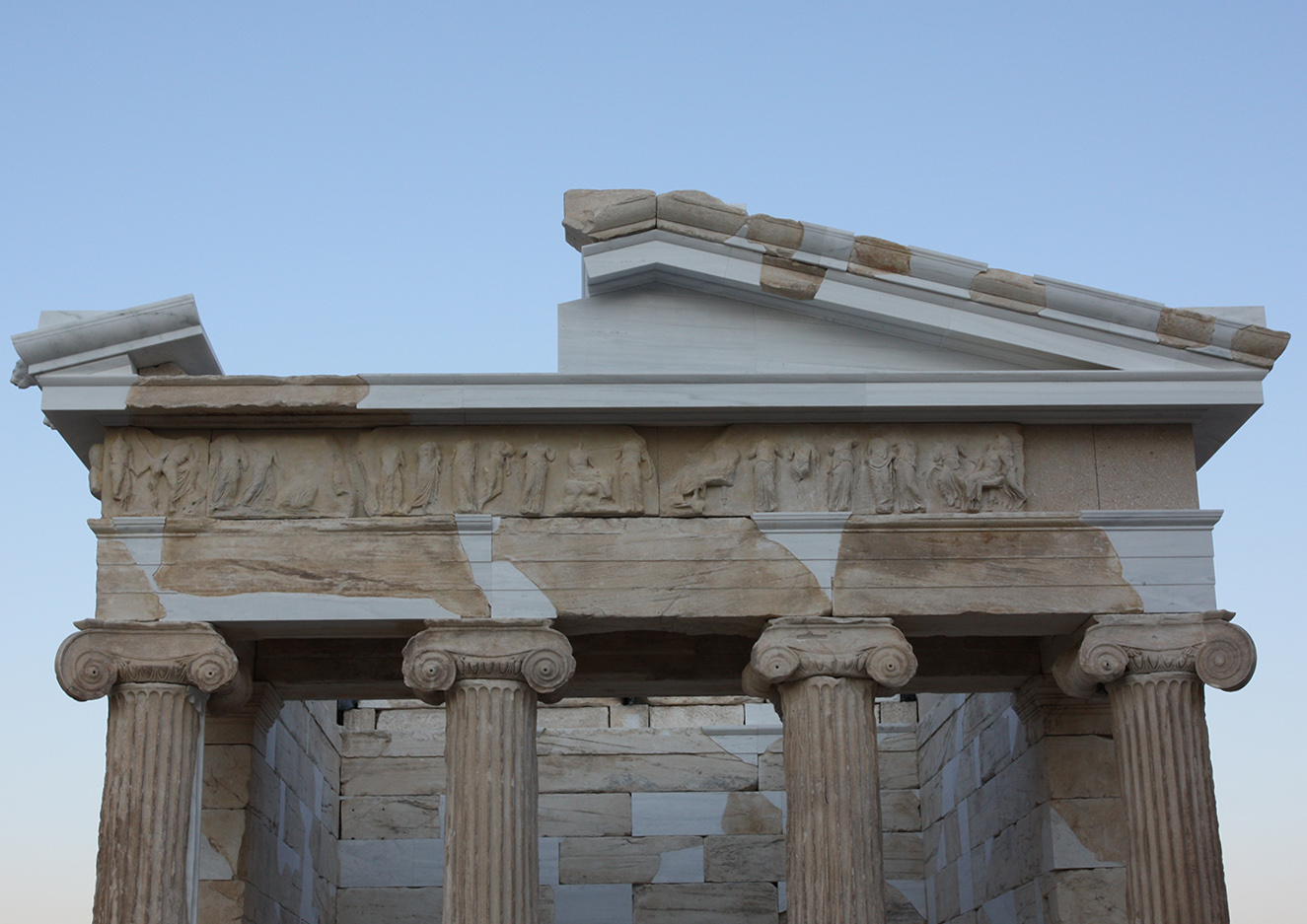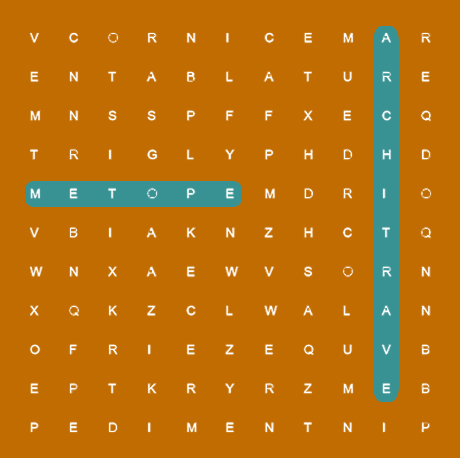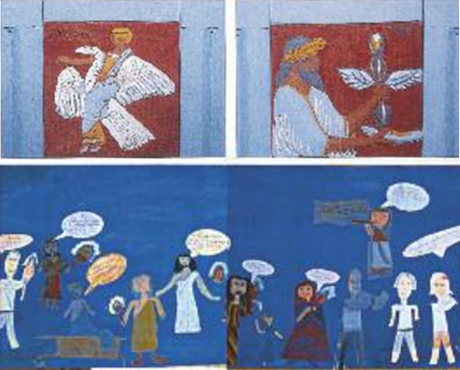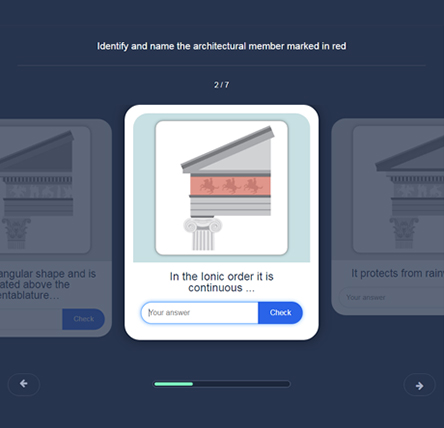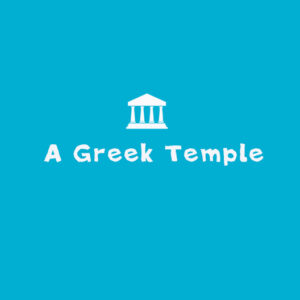The part of the temple above the columns consists of three parts:
-
Τhe architrave, a horizontal beam placed above the columns connecting them
-
The frieze, a band often decorated with sculptures; it ran around the temple above the architrave
-
The cornice, a horizontal element that projects above the frieze to protect the lower parts of the temple from rainwater.
These three parts are called entablature. Together with the external columns they show the order of each building: Doric, Ionic or Corinthian.
And even higher, the pediment!
Above the entablature, on the two narrow sides of the temple, the roof and the horizontal cornice form a triangular area, the pediment. The word “pediment” (in greek αέτωμα) comes from the word “eagle” (in greek αετός). Have you ever seen an eagle with open wings? The pediment in ancient temples was usually decorated with large statues and depicted scenes from the myths of gods or heroes.
What are the differences of the entablature in each order?
The architrave in the Doric order is completely plain while in the other two orders it is divided into three horizontal bands.
The frieze in the Doric order consists of “triglyphs”,parts of the temple decorated with three vertical relief grooves and “metopes”,square slabs that often have relief decoration. The triglyphs alternate with the metopes above the architrave.
In the Ionic and Corinthian order, the frieze is a continuous band decorated with relief depictions.
Slide the bar to explore the parts of the temple
Slide the bar to explore the parts of the temple
Slide the bar to explore the parts of the temple
The sculptures that adorned the frieze and the pediments of the temples were decorated with various colors, such as red, blue, yellow, green, gold. Unfortunately most of these colors have been lost today and the impression we get from the white color of the temples is very different from that of the antiquity. The polychrome ornamentation of the sculptures was even enhanced with fittings such as swords, bridles, wreaths made of metal (bronze), often gilded and attached on the sculptures.
And what happens today?
A very important project of the Acropolis Restoration Service for the protection of the sculptures is their removal from the monuments and their transfer to the Acropolis museum. They are replaced on the monuments with replicas made of artificial stone. This is the case with the sculptures of the Ionic frieze of the Parthenon and the temple of Athena Nike as well as with the metopes and the statues of the pediments of the Parthenon.
[print-me target=".breadcrumbs-row, .column-title, .content" do_not_print=".gallery-shortcode, .h5p-iframe-wrapper, .shortcode-single-image, .wpb_single_image"]
